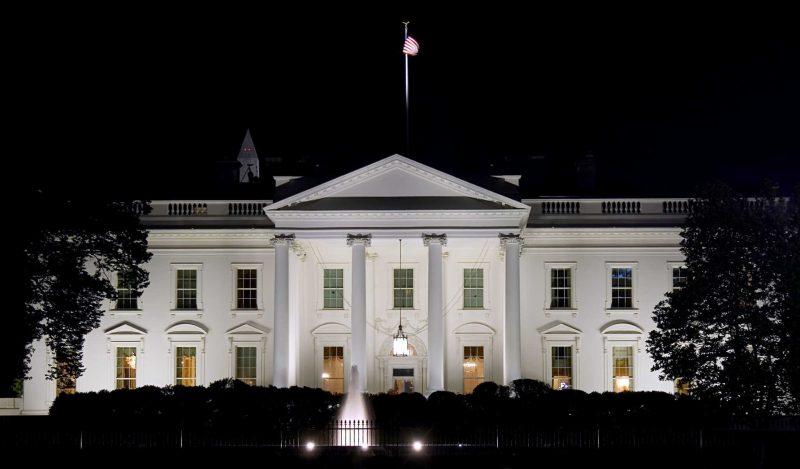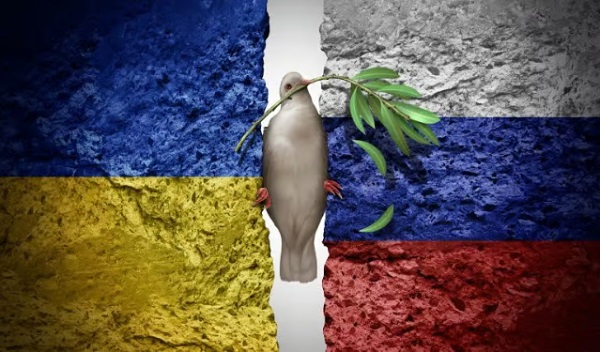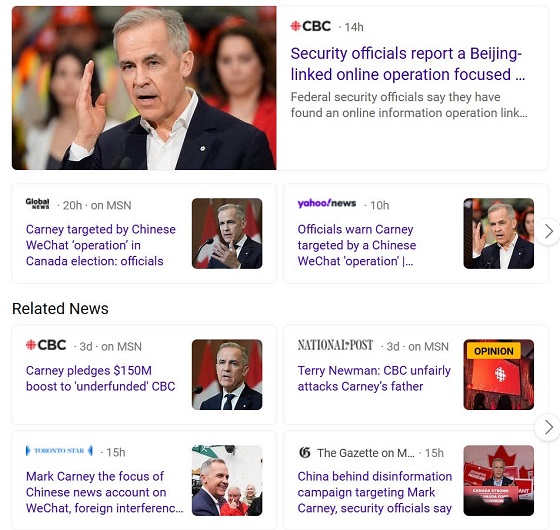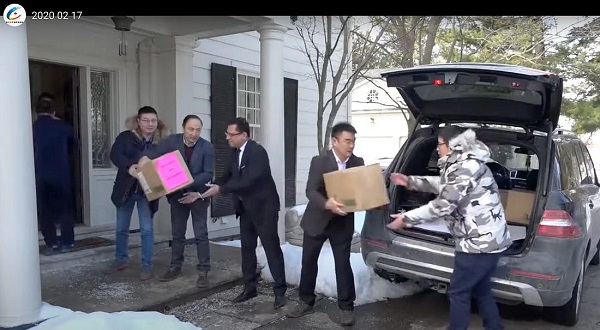Brownstone Institute
Why is Everyone Concerned About the WHO?

From the Brownstone Institute
BY
Over the past two years you’ve probably heard about the attempted WHO power grab. Here’s everything you need to know to understand the status today:
Overview:
- The build-out of a massive and expensive global biosecurity system is underway, allegedly to improve our preparedness for future pandemics or biological terrorism. In aid of this agenda two documents are being prepared through the WHO: a broad series of amendments to the existing International Health Regulations (2005) (IHR) and a proposed, entirely new pandemic treaty.
- A Pandemic Fund a.k.a. financial intermediary fund to aid preparedness worldwide has been established by the World Bank and WHO.
- Multiple names have been used for the new treaty as new drafts are produced, such as: Pandemic Treaty, WHO CA+, Bureau Text, Pandemic Accord, and Pandemic Agreement.
- Negotiations for these documents are being held in secret. The latest available draft of the IHR amendments is from February 6th, 2023.
- The latest Pandemic Treaty draft is from October 30th, 2023.
- Both the amendments and treaty are on a deadline to be considered for adoption at the 77th annual World Health Assembly meeting in May 2024.
- WHO’s principal attorney Steven Solomon has announced that he crafted a legal fig leaf to avoid making the draft amendments public by January 2024, as required by the WHO Constitution.
How Would these Drafts Become International Law?
- A treaty requires a two-thirds vote of the World Health Assembly’s 194 member states to be adopted and is binding only for States that have ratified or accepted it (Article 19 and 20, WHO Constitution). However, it could be enacted into force in the US by a simple signature, without Senate ratification. [See CRS report, “US proposals to Amend the International Health Regulations.”]
- The IHRs and any amendments thereto are adopted by simple majority, and become binding to all WHO Member States, unless a state has rejected or made reservations to them within predefined timeframes (Articles 21 and 22, WHO Constitution; Rule 72, Rules of procedures of the World Health Assembly).
- Last year, however, amendments to 5 articles of the IHRs were considered in opaque committee meetings during the 75th annual meeting, and then adopted by consensus without a formal vote. This process makes it harder to blame individual diplomats for their votes.
- The current draft of the IHR Amendments would allow the Director-General of WHO or Regional Directors to declare a Public Health Emergency of International Concern (PHEIC), or the potential for one, without meeting any specific criteria (Article 12). The WHO would then assume management of the PHEIC and issue binding directives to concerned States.
- PHEICS and potential PHEICs could be declared without the agreement of the concerned State or States.
- WHO’s unelected officials (Director-General, Regional Directors, technical staff) could dictate measures including quarantines, testing and vaccination requirements, lockdowns, border closures, etc.
- WHO officials would not be accountable for their decisions and have diplomatic immunity.

What are Some Specific Problems with the WHO’s Proposed Amendments?
- Article 3 of the proposed IHR amendments removes protections for human rights:
- Struck from the IHR is the crucial guarantee of human rights as a foundation of public health: “The implementation of these Regulations shall be
with full respect for the dignity, human rights and fundamental freedoms of persons…” - This has been replaced with the following legally meaningless phrase: “based on the principles of equity, inclusivity, coherence…”
- Struck from the IHR is the crucial guarantee of human rights as a foundation of public health: “The implementation of these Regulations shall be
- Proposed article 43.4 of the IHR notes that the WHO could ban the use of certain medications or other measures during a pandemic, since its ‘recommendations’ would be binding:
- “WHO shall make recommendations to the State Party concerned to modify or rescind the application of the additional health measures in case of finding such measures as disproportionate or excessive. The Director General shall convene an Emergency Committee for the purposes of this paragraph.”
- States’ obligations in the proposed IHR Amendments would include:
- Conducting extensive biological surveillance of microorganisms and people (Article 5);
- Monitoring mainstream and social media and to censor “false and unreliable information” regarding WHO-designated public health threats (Article 44.1(h)(new));
- Taking medical supplies from one State for use by other States as determined by the WHO (New Article 13A);
- Giving up intellectual property for use by other States or third parties (New Article 13A);
- Transferring genetic sequence data for “pathogens capable of causing pandemics and epidemics or other high-risk situations” to other Nations or third parties, despite the risks this entails (Article 44.1(f) (new)).
What are Problems with the Proposed Pandemic Treaty?
All the Pandemic Treaty drafts (as well as the proposed Amendments to the IHR) produced so far are based on a set of false assumptions. These include the following:
- The WHO Constitution states that, “The WHO is the directing and coordinating authority on international health work.” Recently, to justify becoming the global director of health, the WHO disingenuously dropped the last word–and began claiming it already was “the directing and coordinating authority on international health.” But it is not and never has been. The WHO has always been an advisory body, responding to requests for help from member states. It has never previously been a directing or governing body with authority to govern member states. Here is the relevant part of its Constitution, on page 2:

- The WHO claims that “international spread of disease demands the widest international cooperation,” which ignores the fact that international spread may be quite limited and able to be managed by local or national authorities; ignores that the most appropriate responses will be determined by the specific circumstances, and not by a WHO algorithm; and ignores that the WHO has limited infectious disease expertise relative to large nation states.
- The claim made by WHO is that nations will be able to retain national sovereignty through their ability to pass and enforce health laws, while they will simultaneously be bound and accountable to obey the directives from the WHO on health. This is contradictory and designed to confuse: if the WHO can impose its public health decisions on member states, it and not the states will have sovereignty over health.
- The tremendous cost and suffering from COVID are being blamed on lack of preparedness. However, the US was spending about $10 billion yearly on pandemic preparedness before the pandemic. Yet we had few masks, gloves, gowns, drugs, etc. when the pandemic struck. Why would we expect a central WHO authority, which relies on vested interests for 85 percent of its funding, to do any better?

- The claim is that lack of equity led to failure to share drugs, vaccines, and personal protective equipment (PPE)–ignoring the fact that no nation had sufficient PPE or tests early in the pandemic, and that it was nations withholding generic drugs from their populations that caused important treatment shortages. Furthermore, now that we know the COVID vaccines result in negative efficacy several months post-vaccination (making recipients more susceptible to developing COVID), it is apparent that nations that were last in line for COVID vaccines and whose populations are mostly unvaccinated have fared better overall than those who received vaccines for their populations. The so-called lack of equity was fortuitous for them!
- The claim is that pandemics invariably arise at the animal-human interface and that they are natural in origin. Neither is true for COVID or monkeypox, the last two declared public health emergencies of international concern, which came from laboratories.
- The claim is that the vaguely defined “One Health approach” can prevent or detect pandemics and ameliorate them. Yet it remains unclear what this strategy is, and there is no evidence to support the claim that One Health offers any public health advantages whatsoever.
- The claim is that increasing the capture and study of “potential pandemic pathogens” will be accomplished safely and yield useful pandemic products, when neither is true. The CDC’s Select Agent Program receives 200 reports yearly of accidents, losses or thefts of potential pandemic pathogens from high containment labs within the United States: 4 reports (and 4 potential pandemics) per week! And this is only within the US.
- Drafts of the treaty and amendments assume that pharmaceutical manufacturers will agree to give up certain intellectual property rights. In fact, neither developing nations nor pharmaceutical manufacturers are happy with the recent treaty proposal on intellectual property.
- The claim is that the UN adopted a Declaration on pandemic preparedness supporting the WHO plan on September 20, 2023. In fact, 11 countries rejected the Declaration procedure and it was only signed by the UN General Assembly president, representing himself and not the UN General Assembly.
- The claim is that the WHO has the legal right to require nations to censor “infodemics” and only allow the WHO’s public health narratives to be shared, yet this violates our First Amendment’s freedom of speech.
- The claim is that health “coverage” (insurance) will automatically provide the world’s citizens access to a broad range of health care, while the primary reason for lack of access to healthcare is the lack of practitioners and facilities, not lack of “coverage.”
Here are some Specific Examples of What is Wrong with the Treaty:
Article 3, #2. Sovereignty
“States have, in accordance with the charter of the United Nations and the general principles of international law, the sovereign right to legislate and to implement legislation in pursuance of their health policies.”
This language fails to address the issue of the WHO assuming sovereignty for health matters over states through this treaty. It is a disingenuous attempt to grab sovereignty while claiming otherwise.
Article 3, #3. Equity
“Equity includes the unhindered, fair, equitable and timely access to safe, effective, quality and affordable pandemic – related products and services, information, pandemic – related technologies and social protection.”
However, Article 9, #2 (d) states that parties shall promote “infodemic management,” and infodemic is defined in Article 1(c) as false or misleading information. Article 18, #1 instructs the Parties to “combat false, misleading, misinformation or disinformation…” In earlier drafts the WHO spelled out that only the WHO’s public health narrative would be allowed to spread.
Article 4, #3. Pandemic Prevention and Public Health Surveillance
“The Parties shall cooperate with the support of the WHO Secretariat to strengthen and maintain public health laboratory and diagnostic capacities, especially with respect to the capacity to perform genetic sequencing, data science to assess the risk of detected pathogens and to safely handle samples containing pathogens and the use of related digital tools.”
While this section omits incentivizing Gain-of-Function laboratory research (which was included in the earlier Bureau draft) it does direct nations to perform genetic sequencing of potential pandemic pathogens (i.e., biological warfare agents) they find and to safely handle them, which requires high containment (BSL3/4) laboratories. Also in Article 4 is the need to “develop, strengthen and maintain the capacity to (i) detect, identify and characterize pathogens presenting significant risks…” indicating the directive for nations to perform surveillance to seek out such pathogens and study them.
Article 6, #4. Preparedness, Readiness, and Resilience
“The Parties shall establish, building on existing arrangements as appropriate, genomics, risk assessment, and laboratory networks in order to conduct surveillance and sharing of emerging pathogens with pandemic potential, with such sharing pursuant to the terms and modalities established in Article 12.” Article 1 (h) defined ‘ “pathogen with pandemic potential” as any pathogen that has been identified to infect humans and that is potentially highly transmissible and capable of wide, uncontrollable spread in human populations and highly virulent, making it likely to cause significant morbidity and/or mortality in humans.”
Why does the WHO require nations to go out and find potential pandemic pathogens (a.k.a. biological warfare agents) and supply both biologic samples and pathogens’ genetic sequences to the WHO, where they will be shared with pharmaceutical companies, research centers and academic institutions, as well as possible others? They are also to share the genetic sequences online, where hackers could obtain the sequences and produce biological warfare agents. Yet this behavior is prohibited by Security Council Resolution 1540.
Article 8, #3. Preparedness Monitoring and Functional Reviews
“The parties shall, building on existing tools, develop and implement an inclusive, transparent, effective and efficient pandemic prevention, preparedness and response monitoring and evaluation system.”
Yet 4 different monitoring systems (“tools”–see graphic below) have been used to gauge nations’ readiness for pandemics and all 4 failed to predict how well they would do when COVID appeared. There is no acknowledgement of the failures of our assessment tools, nor discussion of whether there exist any useful assessment tools. And this begs the question why, if our means of assessing progress against pandemics failed, do we think that similar efforts are likely to be successful in future?

Article 10, #1 (d). Sustainable Production
“The Parties encourage entities, including manufacturers within their respective jurisdictions, in particular those that receive significant public financing, to grant, subject to any existing licensing restrictions, on mutually agreed terms, non-exclusive royalty-free licenses to any manufacturers, particularly from developing countries, to use their intellectual property and other protected substances, products, technology, know-how, information and knowledge used in the process of pandemic – related product development and production, in particular for pre-pandemic and pandemic diagnostics, vaccines and therapeutics for use in agreed developing countries.”
This and related sections are probably what make the pharma organization so upset with the current Treaty draft.
Article 12, #4 (a) i (2) Access and Benefit-Sharing
“Upload the genetic sequence of such WHO PABS (Pathogen Access and Benefits System) material to one or more publicly accessible databases of its choice, provided that the database has put in place an appropriate arrangement with respect to WHO PABS material.”
The treaty requires the sharing of pathogens and the need to identify and upload their genetic sequences online, where they will be accessible. This could also be called proliferation of biological weapons agents, which is generally considered a crime. In the US, “Select Agents” are those designated to have pandemic potential, and the select agent program is managed by CDC and USDA. For safety, CDC must give permission to transfer select agents. Yet the select agent rules are ignored in this WHO Treaty, which demands transfer of agents that could cause a worldwide pandemic. And in an apparent effort to handwave over existing rules, the draft states in Article 12, #8.
“The Parties shall ensure that such a system is consistent with, supportive of, and does not run counter to, the objectives of the Convention on Biological Diversity and the Nagoya Protocol thereto. The WHO PABS system will provide certainty and legal clarity to the providers and users of WHO PABS materials.”
Article 13, #3 (e). Global Supply Chain and Logistics (SCL)
“The terms of the WHO SCL Network shall include: facilitating the negotiation and agreement of advance purchase commitments and procurement contracts for pandemic-related products.”
Advance purchase commitments are contracts that obligate nations to buy products for pandemics in advance, sight unseen. Neither the manufacturer nor the state party knows what is coming, but once WHO issues a pandemic declaration, the contracts are activated and the US government will have to buy what the manufacturer produces. The 2009 swine flu pandemic provides a useful example. Advance purchase commitments led to tens of billions in vaccine purchases in North America and Europe for a flu that was less severe than normal. The GSK Pandemrix brand of vaccine led to over 1,300 cases of severe narcolepsy, primarily in adolescents. Rapid production of vaccines for which profits are guaranteed and liability is waived has never once been a win for the consumer.
Article 14. Regulatory Strengthening
Nations are to harmonize their regulatory requirements, expedite approvals and authorizations and ensure that legal frameworks are in place to support emergency approvals. This incentivizes a race to the bottom for drug and vaccine approval standards, particularly during emergencies.
Republished from the author’s Substack
Further Reading:
The WHO’s Proposed Treaty Will Increase Man-Made Pandemics, by Meryl Nass M.D.
What Can Countries Do Right Now to Slow Down the WHO? (PDF Download)
Collected IHR Amendment Drafts
Collected Pandemic Treaty Drafts
Brownstone Institute
If the President in the White House can’t make changes, who’s in charge?

From the Brownstone Institute
By
Who Controls the Administrative State?
President Trump on March 20, 2025, ordered the following: “The Secretary of Education shall, to the maximum extent appropriate and permitted by law, take all necessary steps to facilitate the closure of the Department of Education.”
That is interesting language: to “take all necessary steps to facilitate the closure” is not the same as closing it. And what is “permitted by law” is precisely what is in dispute.
It is meant to feel like abolition, and the media reported it as such, but it is not even close. This is not Trump’s fault. The supposed authoritarian has his hands tied in many directions, even over agencies he supposedly controls, the actions of which he must ultimately bear responsibility.
The Department of Education is an executive agency, created by Congress in 1979. Trump wants it gone forever. So do his voters. Can he do that? No but can he destaff the place and scatter its functions? No one knows for sure. Who decides? Presumably the highest court, eventually.
How this is decided – whether the president is actually in charge or really just a symbolic figure like the King of Sweden – affects not just this one destructive agency but hundreds more. Indeed, the fate of the whole of freedom and functioning of constitutional republics may depend on the answer.
All burning questions of politics today turn on who or what is in charge of the administrative state. No one knows the answer and this is for a reason. The main functioning of the modern state falls to a beast that does not exist in the Constitution.
The public mind has never had great love for bureaucracies. Consistent with Max Weber’s worry, they have put society in an impenetrable “iron cage” built of bloodless rationalism, needling edicts, corporatist corruption, and never-ending empire-building checked by neither budgetary restraint nor plebiscite.
Today’s full consciousness of the authority and ubiquity of the administrative state is rather new. The term itself is a mouthful and doesn’t come close to describing the breadth and depth of the problem, including its root systems and retail branches. The new awareness is that neither the people nor their elected representatives are really in charge of the regime under which we live, which betrays the whole political promise of the Enlightenment.
This dawning awareness is probably 100 years late. The machinery of what is popularly known as the “deep state” – I’ve argued there are deep, middle, and shallow layers – has been growing in the US since the inception of the civil service in 1883 and thoroughly entrenched over two world wars and countless crises at home and abroad.
The edifice of compulsion and control is indescribably huge. No one can agree precisely on how many agencies there are or how many people work for them, much less how many institutions and individuals work on contract for them, either directly or indirectly. And that is just the public face; the subterranean branch is far more elusive.
The revolt against them all came with the Covid controls, when everyone was surrounded on all sides by forces outside our purview and about which the politicians knew not much at all. Then those same institutional forces appear to be involved in overturning the rule of a very popular politician whom they tried to stop from gaining a second term.
The combination of this series of outrages – what Jefferson in his Declaration called “a long train of abuses and usurpations, pursuing invariably the same Object” – has led to a torrent of awareness. This has translated into political action.
A distinguishing mark of Trump’s second term has been an optically concerted effort, at least initially, to take control of and then curb administrative state power, more so than any executive in living memory. At every step in these efforts, there has been some barrier, even many on all sides.
There are at least 100 legal challenges making their way through courts. District judges are striking down Trump’s ability to fire workers, redirect funding, curb responsibilities, and otherwise change the way they do business.
Even the signature early achievement of DOGE – the shuttering of USAID – has been stopped by a judge with an attempt to reverse it. A judge has even dared tell the Trump administration who it can and cannot hire at USAID.
Not a day goes by when the New York Times does not manufacture some maudlin defense of the put-upon minions of the tax-funded managerial class. In this worldview, the agencies are always right, whereas any elected or appointed person seeking to rein them in or terminate them is attacking the public interest.
After all, as it turns out, legacy media and the administrative state have worked together for at least a century to cobble together what was conventionally called “the news.” Where would the NYT or the whole legacy media otherwise be?
So ferocious has been the pushback against even the paltry successes and often cosmetic reforms of MAGA/MAHA/DOGE that vigilantes have engaged in terrorism against Teslas and their owners. Not even returning astronauts from being “lost in space” has redeemed Elon Musk from the wrath of the ruling class. Hating him and his companies is the “new thing” for NPCs, on a long list that began with masks, shots, supporting Ukraine, and surgical rights for gender dysphoria.
What is really at stake, more so than any issue in American life (and this applies to states around the world) – far more than any ideological battles over left and right, red and blue, or race and class – is the status, power, and security of the administrative state itself and all its works.
We claim to support democracy yet all the while, empires of command-and-control have arisen among us. The victims have only one mechanism available to fight back: the vote. Can that work? We do not yet know. This question will likely be decided by the highest court.
All of which is awkward. It is impossible to get around this US government organizational chart. All but a handful of agencies live under the category of the executive branch. Article 2, Section 1, says: “The executive Power shall be vested in a President of the United States of America.”

Does the president control the whole of the executive branch in a meaningful way? One would think so. It’s impossible to understand how it could be otherwise. The chief executive is…the chief executive. He is held responsible for what these agencies do – we certainly blasted away at the Trump administration in the first term for everything that happened under his watch. In that case, and if the buck really does stop at the Oval Office desk, the president must have some modicum of control beyond the ability to tag a marionette to get the best parking spot at the agency.
What is the alternative to presidential oversight and management of the agencies listed in this branch of government? They run themselves? That claim means nothing in practice.
For an agency to be deemed “independent” turns out to mean codependency with the industries regulated, subsidized, penalized, or otherwise impacted by its operations. HUD does housing development, FDA does pharmaceuticals, DOA does farming, DOL does unions, DOE does oil and turbines, DOD does tanks and bombs, FAA does airlines, and so on It goes forever.
That’s what “independence” means in practice: total acquiescence to industrial cartels, trade groups, and behind-the-scenes systems of payola, blackmail, and graft, while the powerless among the people live with the results. This much we have learned and cannot unlearn.
That is precisely the problem that cries out for a solution. The solution of elections seems reasonable only if the people we elected actually have the authority over the thing they seek to reform.
There are criticisms of the idea of executive control of executive agencies, which is really nothing other than the system the Founders established.
First, conceding more power to the president raises fears that he will behave like a dictator, a fear that is legitimate. Partisan supporters of Trump won’t be happy when the precedent is cited to reverse Trump’s political priorities and the agencies turn on red-state voters in revenge.
That problem is solved by dismantling agency power itself, which, interestingly, is mostly what Trump’s executive orders have sought to achieve and which the courts and media have worked to stop.
Second, one worries about the return of the “spoils system,” the supposedly corrupt system by which the president hands out favors to friends in the form of emoluments, a practice the establishment of the civil service was supposed to stop.
In reality, the new system of the early 20th century fixed nothing but only added another layer, a permanent ruling class to participate more fully in a new type of spoils system that operated now under the cloak of science and efficiency.
Honestly, can we really compare the petty thievery of Tammany Hall to the global depredations of USAID?
Third, it is said that presidential control of agencies threatens to erode checks and balances. The obvious response is the organizational chart above. That happened long ago as Congress created and funded agency after agency from the Wilson to the Biden administration, all under executive control.
Congress perhaps wanted the administrative state to be an unannounced and unaccountable fourth branch, but nothing in the founding documents created or imagined such a thing.
If you are worried about being dominated and destroyed by a ravenous beast, the best approach is not to adopt one, feed it to adulthood, train it to attack and eat people, and then unleash it.
The Covid years taught us to fear the power of the agencies and those who control them not just nationally but globally. The question now is two-fold: what can be done about it and how to get from here to there?
Trump’s executive order on the Department of Education illustrates the point precisely. His administration is so uncertain of what it does and can control, even of agencies that are wholly executive agencies, listed clearly under the heading of executive agencies, that it has to dodge and weave practical and legal barriers and land mines, even in its own supposed executive pronouncements, even to urge what might amount to be minor reforms.
Whoever is in charge of such a system, it is clearly not the people.
Brownstone Institute
The New Enthusiasm for Slaughter

From the Brownstone Institute
By
What War Means
My mother once told me how my father still woke up screaming in the night years after I was born, decades after the Second World War (WWII) ended. I had not known – probably like most children of those who fought. For him, it was visions of his friends going down in burning aircraft – other bombers of his squadron off north Australia – and to be helpless, watching, as they burnt and fell. Few born after that war could really appreciate what their fathers, and mothers, went through.
Early in the movie Saving Private Ryan, there is an extended D-Day scene of the front doors of the landing craft opening on the Normandy beaches, and all those inside being torn apart by bullets. It happens to one landing craft after another. Bankers, teachers, students, and farmers being ripped in pieces and their guts spilling out whilst they, still alive, call for help that cannot come. That is what happens when a machine gun opens up through the open door of a landing craft, or an armored personnel carrier, of a group sent to secure a tree line.
It is what a lot of politicians are calling for now.
People with shares in the arms industry become a little richer every time one of those shells is fired and has to be replaced. They gain financially, and often politically, from bodies being ripped open. This is what we call war. It is increasingly popular as a political strategy, though generally for others and the children of others.
Of course, the effects of war go beyond the dismembering and lonely death of many of those fighting. Massacres of civilians and rape of women can become common, as brutality enables humans to be seen as unwanted objects. If all this sounds abstract, apply it to your loved ones and think what that would mean.
I believe there can be just wars, and this is not a discussion about the evil of war, or who is right or wrong in current wars. Just a recognition that war is something worth avoiding, despite its apparent popularity amongst many leaders and our media.
The EU Reverses Its Focus
When the Brexit vote determined that Britain would leave the European Union (EU), I, like many, despaired. We should learn from history, and the EU’s existence had coincided with the longest period of peace between Western European States in well over 2,000 years.
Leaving the EU seemed to be risking this success. Surely, it is better to work together, to talk and cooperate with old enemies, in a constructive way? The media, and the political left, center, and much of the right seemed at that time, all of nine years ago, to agree. Or so the story went.
We now face a new reality as the EU leadership scrambles to justify continuing a war. Not only continuing, but they had been staunchly refusing to even countenance discussion on ending the killing. It has taken a new regime from across the ocean, a subject of European mockery, to do that.
In Europe, and in parts of American politics, something is going on that is very different from the question of whether current wars are just or unjust. It is an apparent belief that advocacy for continued war is virtuous. Talking to leaders of an opposing country in a war that is killing Europeans by the tens of thousands has been seen as traitorous. Those proposing to view the issues from both sides are somehow “far right.”
The EU, once intended as an instrument to end war, now has a European rearmament strategy. The irony seems lost on both its leaders and its media. Arguments such as “peace through strength” are pathetic when accompanied by censorship, propaganda, and a refusal to talk.
As US Vice-President JD Vance recently asked European leaders, what values are they actually defending?
Europe’s Need for Outside Help
A lack of experience of war does not seem sufficient to explain the current enthusiasm to continue them. Architects of WWII in Europe had certainly experienced the carnage of the First World War. Apart from the financial incentives that human slaughter can bring, there are also political ideologies that enable the mass death of others to be turned into an abstract and even positive idea.
Those dying must be seen to be from a different class, of different intelligence, or otherwise justifiable fodder to feed the cause of the Rules-Based Order or whatever other slogan can distinguish an ‘us’ from a ‘them’…While the current incarnation seems more of a class thing than a geographical or nationalistic one, European history is ripe with variations of both.
Europe appears to be back where it used to be, the aristocracy burning the serfs when not visiting each other’s clubs. Shallow thinking has the day, and the media have adapted themselves accordingly. Democracy means ensuring that only the right people get into power.
Dismembered European corpses and terrorized children are just part of maintaining this ideological purity. War is acceptable once more. Let’s hope such leaders and ideologies can be sidelined by those beyond Europe who are willing to give peace a chance.
There is no virtue in the promotion of mass death. Europe, with its leadership, will benefit from outside help and basic education. It would benefit even further from leadership that values the lives of its people.
-

 2025 Federal Election2 days ago
2025 Federal Election2 days agoCorporate Media Isn’t Reporting on Foreign Interference—It’s Covering for It
-

 2025 Federal Election2 days ago
2025 Federal Election2 days agoPoilievre will make it harder for politicians to boost their portfolios, close Carney loopholes
-

 2025 Federal Election1 day ago
2025 Federal Election1 day agoPPE Videos, CCP Letters Reveal Pandemic Coordination with Liberal Riding Boss and Former JCCC Leader—While Carney Denies Significant Meeting In Campaign
-

 2025 Federal Election1 day ago
2025 Federal Election1 day agoNo Matter The Winner – My Canada Is Gone
-

 2025 Federal Election1 day ago
2025 Federal Election1 day agoASK YOURSELF! – Can Canada Endure, or Afford the Economic Stagnation of Carney’s Costly Climate Vision?
-

 2025 Federal Election2 days ago
2025 Federal Election2 days agoMark Carney Vows Internet Speech Crackdown if Elected
-

 2025 Federal Election2 days ago
2025 Federal Election2 days agoTrudeau and Carney Have Blown $43B on EVs
-

 Alberta1 day ago
Alberta1 day agoProvince to expand services provided by Alberta Sheriffs: New policing option for municipalities









